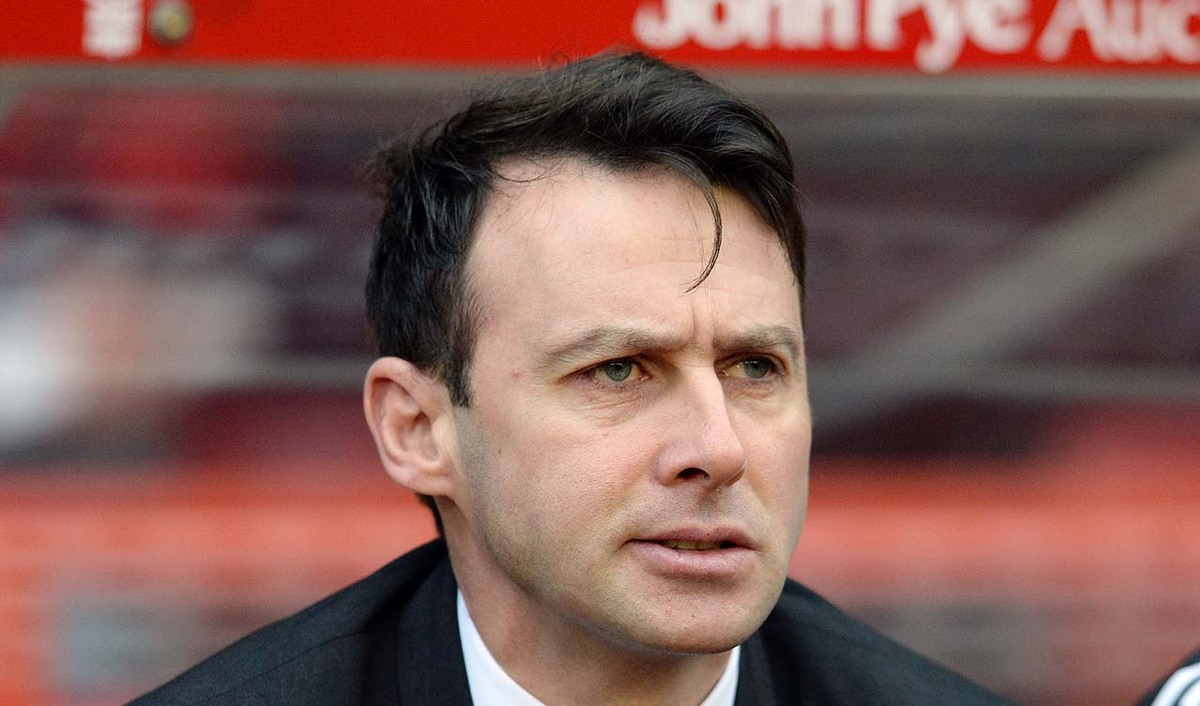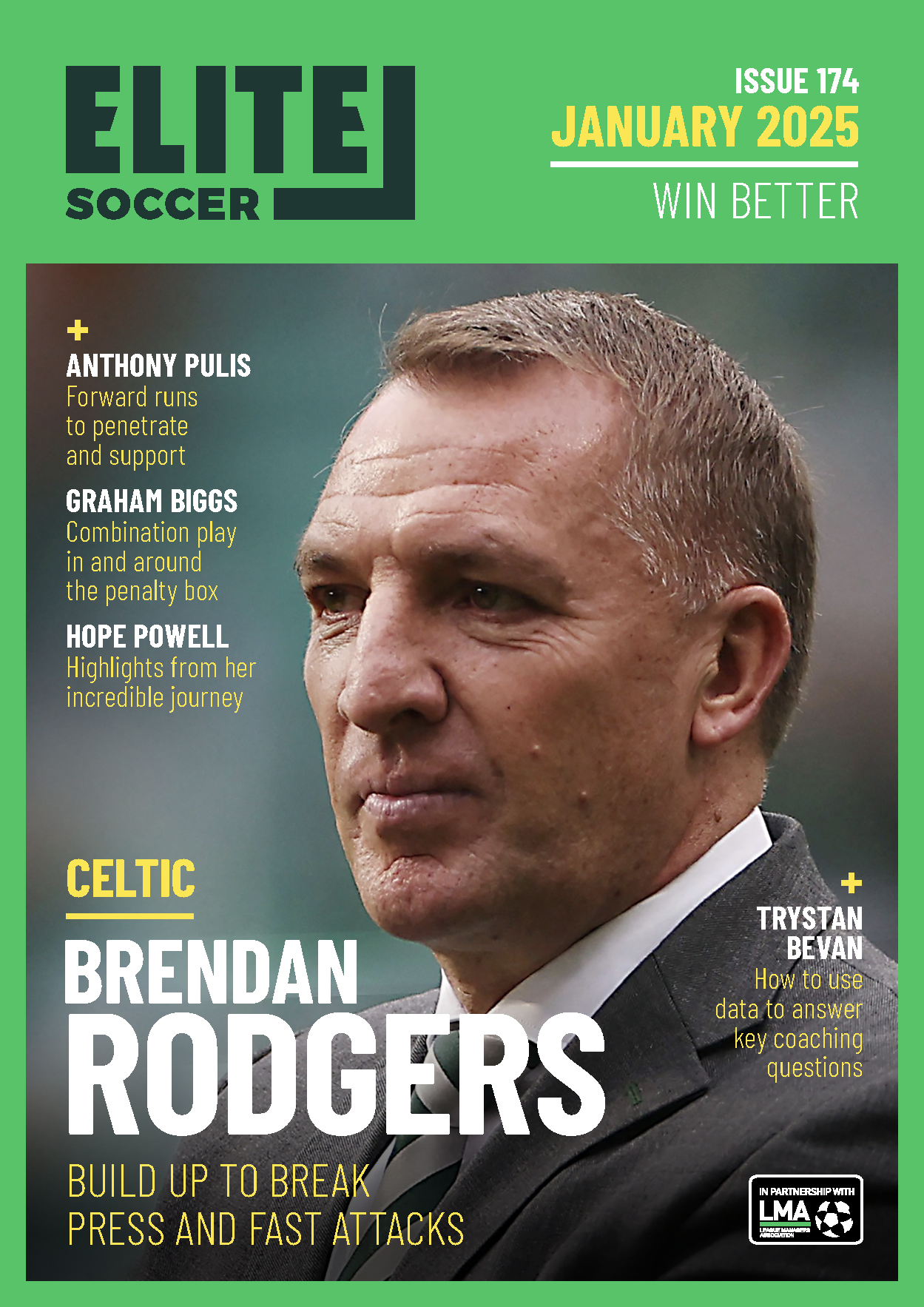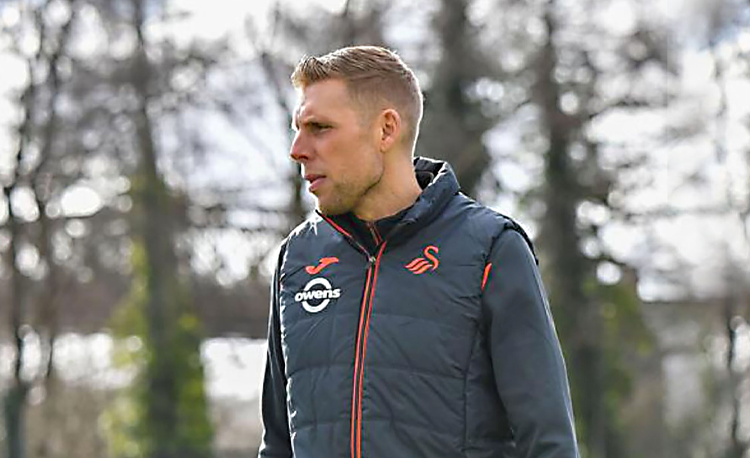You are viewing 1 of your 1 free articles
Supporting from deep
This session is about forward runs and the ability of players to work at pace, supporting from deep or getting beyond a front striker to attack danger areas.
| Area | of the pitch |
| Equipment | Balls, cones, goals |
| No. of Players | Full squad |
This session is about forward runs and the ability of players to work at pace, supporting from deep or getting beyond a front striker to attack danger areas.
For teams looking to build attacking play, intelligent forward running is essential, as is the timing and execution of those breaks. Players must also work to vary passes into feet with balls into space.
It would be fair to say we see this dynamic forward play, and the way players break upfield in support, paying off in every game, since it is at the heart of supporting attacking moves. We believe it is something that cannot be over-rehearsed.
What do I get the players to do?
It’s important to rehearse types of runs, unopposed. A peeled run (A) sees players running off the shoulder of a defender; a blindside run (B) looks to attack out of the vision of a marker; while runs from deep (C) are direct and through the middle.
We put these running techniques into a game session, creating an 80x50 yard playing area, with a 10-yard zone in front of the goal at each end.
The match is 10v10, including goalkeepers, with all players starting in the half that the yellow team attacks. There are two neutral floating players off the pitch who can support attacking moves from either team.
The ball is served to a yellow player. His team combines to lay off a pass to the target man, using peeled, blindside or other runs to receive the ball back and fashion a shot at goal. If they succeed, or if play is turned over, the blue team takes possession.
Blues attack the other goal, but their target player begins on the halfway line. The team does not have to use this outlet, though because yellows are prevented from moving into the other half to tackle back, blues only have three touches before shooting at goal. After the attack, play is restarted with the yellow team on the halfway line. We play this for four sets of eight minutes.
1
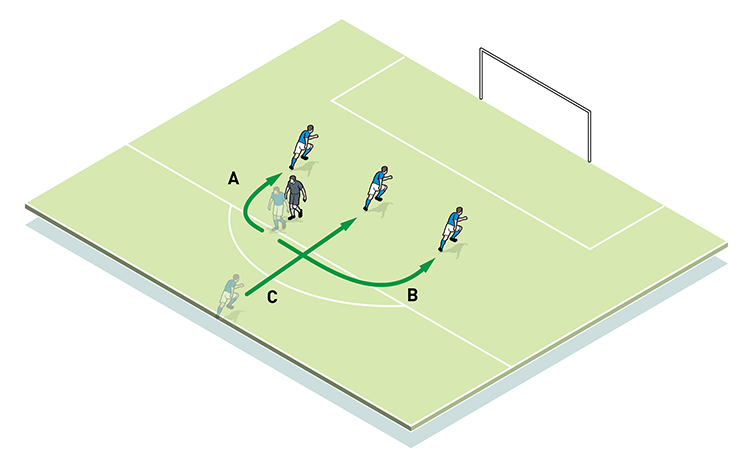
2
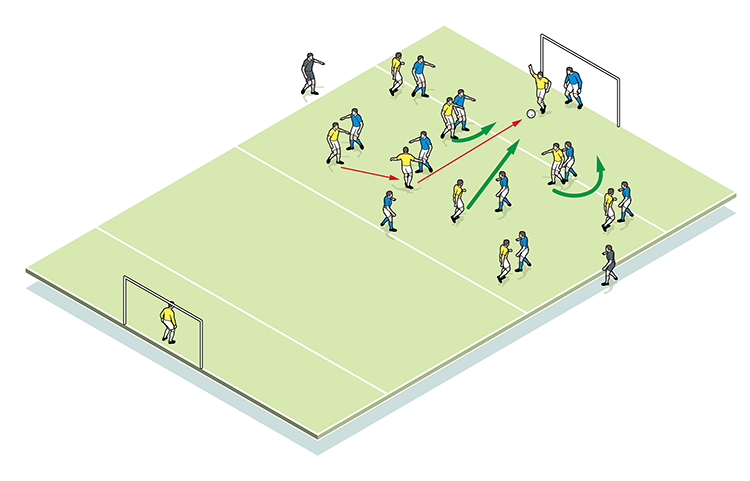
3
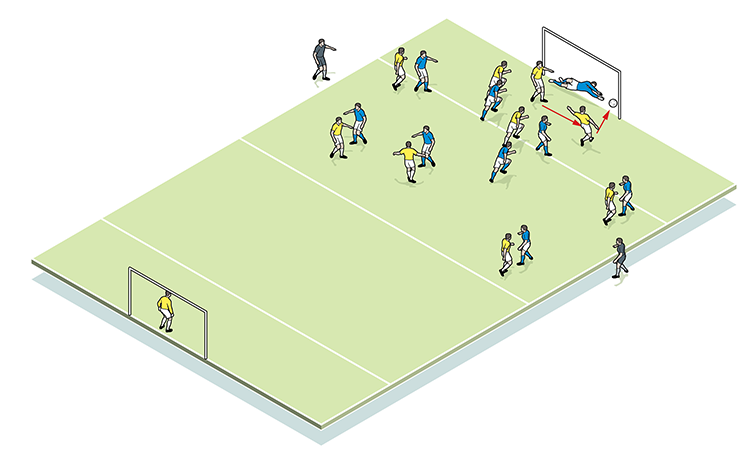
What are the key things to look for technically/tactically?
In technical terms, we look for confident passing with balls being played into feet, at varying heights and with good accuracy.
Players also need to hit space, ensuring a weight and angle of pass that makes running on to the ball easy. We encourage a variation of aerial and grounded assists.
In tactical terms, we rely on the awareness and intelligence of our players, as support play varies between runs in behind, blindside runs, peeled runs, plus overlaps and underlaps. All of these moves require supporting from deep with good timing, clever angles, and an appreciation of distance, both from the ball player and towards the goal.
How do I progress the session?
We progress by allowing yellow defenders to now pursue the blue breakaway moves. Should they regain possession, they attack the other goal.
4
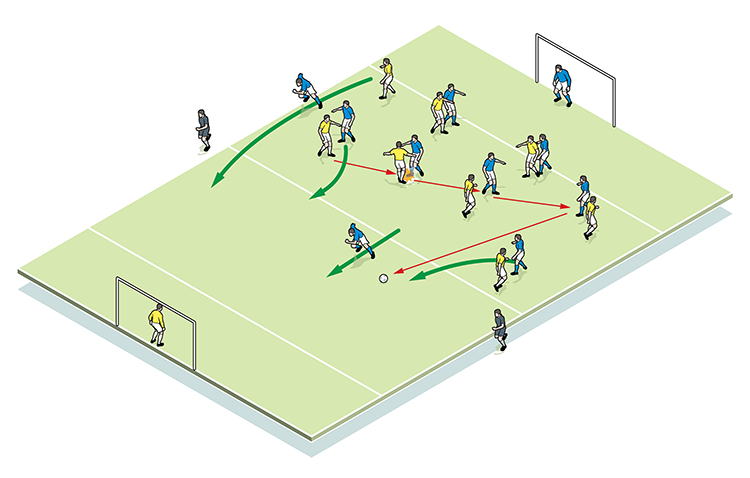
5
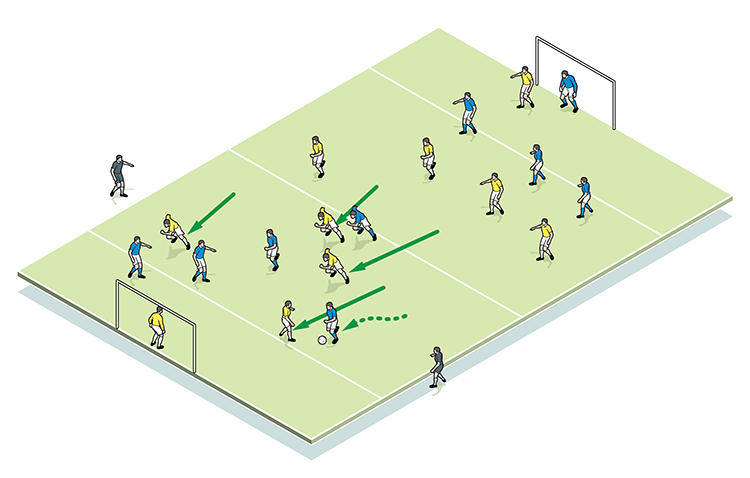
6
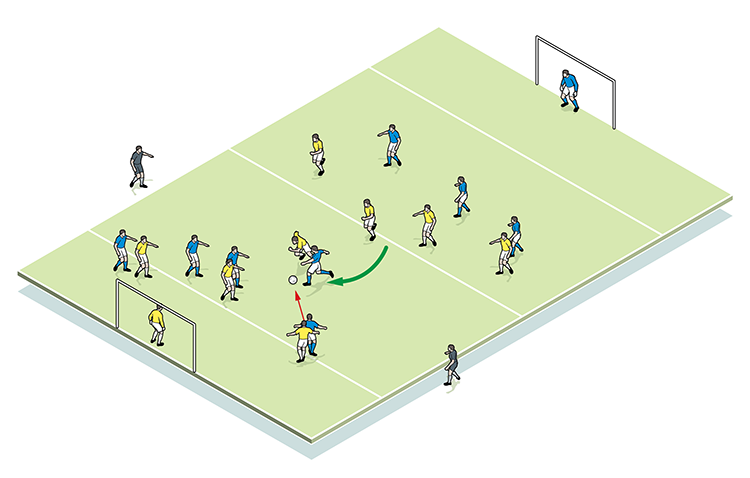
Related Files
Editor's Picks
Using the goalkeeper in build-up play
Pressing principles
Intensive boxes drill with goals
Penetrating the final third
Creating and finishing
My philosophy
Pressing initiation
Compact team movement
Defensive organisation
Coaches' Testimonials

Alan Pardew

Arsène Wenger

Brendan Rodgers

Carlos Carvalhal

José Mourinho

Jürgen Klopp

Pep Guardiola

Roy Hodgson

Sir Alex Ferguson

Steven Gerrard
Coaches' Testimonials

Gerald Kearney, Downtown Las Vegas Soccer Club

Paul Butler, Florida, USA

Rick Shields, Springboro, USA

Tony Green, Pierrefonds Titans, Quebec, Canada
Join the world's leading coaches and managers and discover for yourself one of the best kept secrets in coaching. No other training tool on the planet is written or read by the calibre of names you’ll find in Elite Soccer.
In a recent survey 92% of subscribers said Elite Soccer makes them more confident, 89% said it makes them a more effective coach and 91% said it makes them more inspired.
Get Monthly Inspiration
All the latest techniques and approaches
Since 2010 Elite Soccer has given subscribers exclusive insight into the training ground practices of the world’s best coaches. Published in partnership with the League Managers Association we have unparalleled access to the leading lights in the English leagues, as well as a host of international managers.
Elite Soccer exclusively features sessions written by the coaches themselves. There are no observed sessions and no sessions “in the style of”, just first-hand advice delivered direct to you from the coach.
